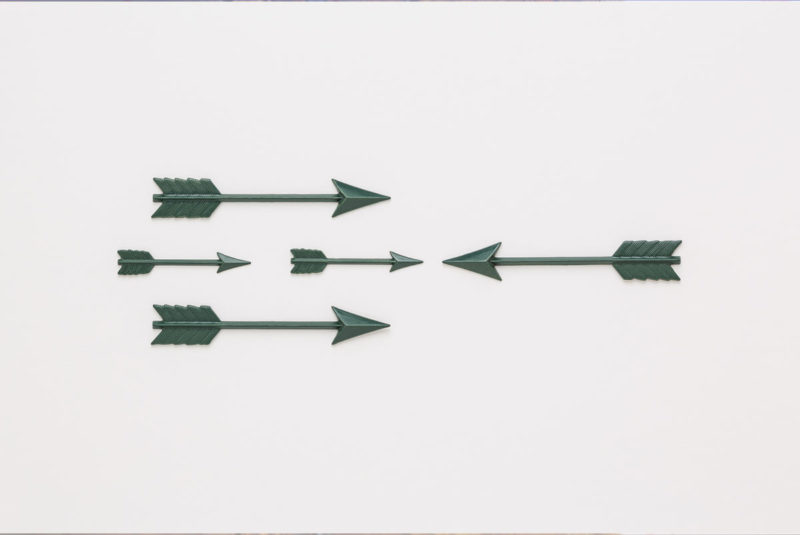Ready To Buy a Home?
Get Approved to Buy a Home
Rocket Mortgage® lets you get to house hunting sooner.
If you’re eyeing a property and don’t want to miss out or you’re relocating for work and need to buy sooner rather than later, we understand the urge to act quickly.
If you need money to cover a down payment or closing costs and you still haven’t sold your current home or you don’t know if you’ll be able to sell it in time, the answer to your financing bind might be a bridge loan.
A bridge loan can finance a new home when your equity is tied up in an existing property. This short-term financing arrangement will give you the cash flow you’ll need to make the purchase while you’re waiting for your current home to be sold.
This type of loan has risks, but in the right situation, it could give you some wiggle room while you’re waiting on the money from the sale of your home.
Under the Bridge (Loan): How It Works
One of the pleasures of being a homeowner is watching your equity grow as you pay off your mortgage. However, when you’re selling your home, your equity doesn’t become cash in your pocket until your sale closes.
As the name suggests, a bridge loan (aka gap financing, interim financing or a swing loan) spans the gap in financing as you transition between two homes.
Some bridging loan examples
With a typical bridge loan, you need at least 20% equity in your home and can borrow a maximum of 80% of your home’s value. You can use the funds in two ways:
- Borrow enough to pay off your current mortgage: In this scenario, you use your bridge loan to pay off the remaining balance on your current home before you sell. If you have money left over after you’ve paid off your mortgage, you can then use the rest of the money to cover closing costs or make a down payment on the new home. When your old house sells, you pay off the bridge loan.
- Borrow enough to make a down payment on your new home: In this scenario, take out a bridge loan to cover the down payment on the home you plan to buy. You’ll still have two mortgages until you sell your old home. After that, you can use the money from the sale and apply it to the remaining balance of your first mortgage and the bridge loan.
This may be the best option if you don’t qualify for a larger bridge loan or you want to limit how much you borrow.
Depending on the lender, you may not need to make payments on the bridge loan right away. But, in the meantime, interest is accruing on the loan, so consider making interest-only payments.
What do I need to qualify for a bridge loan?
You can usually get a bridge loan faster than a traditional loan because you have a home as collateral. Lenders have different requirements, but typically you’ll need:
- Equity: You usually need at least 20% equity in your current home.
- Low debt-to-income (DTI) ratio: Lenders prefer a DTI of 43%.[1] DTI is your total monthly debt divided by your pretax income. (You can figure out your DTI with our debt-to-income calculator.)
- Good credit: Lenders want to know that you pay your debts on time and in full. According to Experian™, when processing bridge loan applications, lenders look for high credit scores. A “good” credit score is north of 700 and an “excellent” score is over 800.[2]
A lender will look at your overall financial picture, including your credit history, to verify that you’re a reliable borrower. Your approval will depend on how much equity you have, whether you can handle two mortgages and the likelihood that you’ll pay the bridge loan back.
What is a bridge loan’s interest rate?
Bridging finance loans can help you get money quickly by leveraging equity, but it will come at a steep cost. Lenders often charge higher rates and fees than traditional mortgages for these short-term financing arrangements.
You could be looking at interest rates between 8% – 10% or as high as double the rate of the average 30-year fixed-rate mortgage.[3]
Other fees, which can add up to 2% – 3% of your loan amount, include:
- Origination fees (based on the amount you’re borrowing)
- Appraisal fees
- Escrow fees
- Title insurance
- Notarization fees
- Administration fees
What happens if a bridge loan isn’t paid back?
While the current seller’s market lowers your risk of getting stuck paying multiple loans, markets can change – quickly. If the “for sale” sign stays up longer than you expected, you may find your finances stretched thin.
Bridge lending uses your existing home as collateral for the home. If you default on the bridge loan, the lender could foreclose on your home. So, be really honest about your ability to manage and afford a bridge loan and a mortgage commitment (or two), even if it’s only for a short period of time.
Bridge Loan Checklist
Okay, it’s time for the moment of truth. Now that you’ve approached the bridge, should you cross it? We’ve got some questions for you to answer. They can help you decide if a bridge loan is right for you.
Do you need to buy a new home quickly?
Whether you want to snatch up a home that’s just come on the market or have to relocate for work, a bridge loan can help you buy a property even if you haven’t listed or sold your current one. If you’ve got time, it may make more sense to wait.
Do you want to close on the new home before selling your existing one?
If you need the money to cover closing costs or a down payment on your new home before you can sell the old home, a bridge loan can cover the gap until you sell.
Do you need extra cash for the new property while you wait for your current home to sell?
Bridge loans can provide cash flow. You can use that cash for a down payment, closing costs or repairs and renovations on the new home before you move in.
Do you want to make an offer on a new home with no contingencies?
In a competitive housing market, sellers have the luxury of choosing from multiple offers or waiting for the one that’s the most attractive. With a bridge loan, you can make an offer that’s not contingent on the sale of your current home, which is appealing to sellers.
It’s a legit strategy, but it comes with some risk because it could take you longer than expected to sell your old home, leaving you with extra mortgage payments.
Do you expect your home to sell reasonably quickly?
A bridge loan is a temporary, short-term financing option. A market downturn, or the construction of a highway next to your backyard, may mean that you’ll be waiting a while for your property to sell. Consider the conditions of the real estate market and the marketability of the property.
Do you have at least 20% equity in your current home?
Bridge loans use the equity in the home as security; most lenders require a minimum of 20%.
Do you have a strong credit score and stable finances?
Taking on a loan, especially while you’re carrying a mortgage, requires some stability. Lenders will take your ability to make all of your payments into consideration before approving your application. A credit score of 700 or higher may help get your loan approved and possibly score you a better rate.
Pros and Cons of a Bridge Loan
Use those questions to help you zero in on your financing needs, but you also need to look closely at the fine print of any bridging finance loan. Consider drawing on the expertise of a mortgage broker or loan officer to help you weigh the pros and cons.
What are the pros?
A bridge loan can fill in the financing gap between buying a home and selling a home at the same time. You can:
- Take possession of a new home before your current home is sold.
- Pay off your current mortgage.
- Access cash flow for a down payment, closing costs or repairs and renovations.
- Make an offer on a new home that’s not contingent on the sale of your current home (which is more attractive to sellers but riskier for buyers).
- Free up cash to make a larger down payment. This can help you avoid private mortgage insurance on some loan types and create more favorable terms for your mortgage.
- Potentially defer bridge loan payments while you’re carrying two mortgages. You may also be able to make interest-only payments.
What are the cons?
On the flip side, bridge loans are:
- Expensive: Interest rates and fees tend to be higher for bridge loans compared to other secured loans like mortgages.
- Contingent on equity: You may not be approved for a bridge loan unless you’ve notched at least 20% equity in your current home.
- Stressful: You must make payments on your current mortgage, new mortgage and bridge loan, depending on how you’ve structured the bridge loan.
- Dependent on the sale of your current home: A change in the market or unforeseen circumstances can mean you’re the owner of two homes for longer than expected.
A Different Route: Alternatives to a Bridge Loan
A bridge loan isn’t the only option when you need help with cash flow or covering a temporary gap in your finances. Have a mortgage lender walk you through the various loan products, detailing how much you’ll qualify for and how they’ll work in the context of your financial situation.
Here are some options to consider:
Home equity loan
Home equity loans are a longer-term financial option than bridge loans, and they have competitive interest rates. You can use the equity in your home to borrow a lump sum of money. A home equity loan is a secured loan. Your home will serve as collateral for the loan.
Home equity line of credit
With a home equity line of credit (HELOC), you get a credit line you can draw from as needed. A HELOC costs less than a bridge loan and you can use it for anything. Plus, you only pay interest on what you withdraw. Like a home equity loan, HELOCs use your property as collateral.
80-10-10 loan
With an 80-10-10 loan, you make a 10% down payment on your new home and take out two mortgages. The first mortgage is 80% of the cost of the home, and the second mortgage covers the remaining 10%. When the proceeds from the sale of your current home come through, you pay off the second mortgage.
Personal loan
Sometimes you don’t need a loan product designed specifically for real estate. A personal loan may be the easiest option if you have a stable income, a low DTI ratio and a good credit score.
Drowning in Indecision? The Bottom Line on Bridge Loans
A bridge loan can be an effective option to land a new home before your current one sells. However, taking on additional debt – especially with your home at risk – should be done with care.
Make sure you understand how a bridge loan works and have a backup plan in place before you sign any papers.
Take the first step toward buying a home.
Get approved. See what you qualify for. Start house hunting.
The Short Version
- A real estate bridge loan is a way to finance a new home when you have equity tied up in an existing property. It can be risky, but it may be a good idea if you need to finance a new house before selling your current one
- To qualify for a real estate bridge loan, you need at least 20% equity in your current home, a strong credit score and stable finances
- Interest rates and fees are typically higher for bridge loans than conventional loans
Consumer Financial Protection Bureau. “What is a debt-to-income ratio? Why is the 43% debt-to-income ratio important?” Retrieved December 2021 from https://www.consumerfinance.gov/ask-cfpb/what-is-a-debt-to-income-ratio-why-is-the-43-debt-to-income-ratio-important-en-1791/
Experian™. “What Is a Bridge Loan?” Retrieved December 2021 from https://www.experian.com/blogs/ask-experian/what-is-a-bridge-loan/
Federal Reserve of St. Louis. “30-Year Fixed Rate Mortgage Average in the United States.” Retrieved December 2021 from https://fred.stlouisfed.org/series/MORTGAGE30US#0




